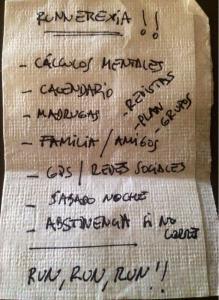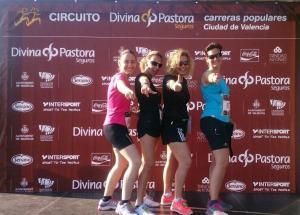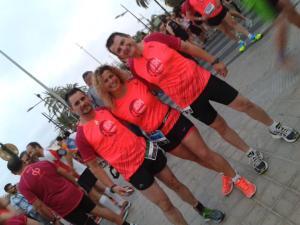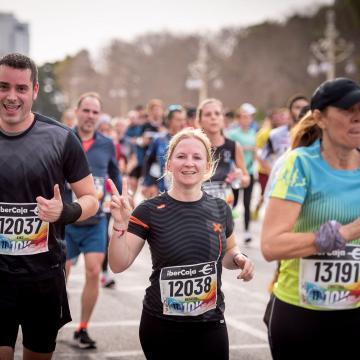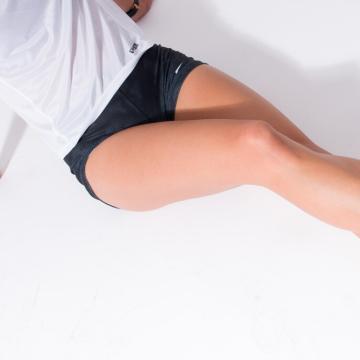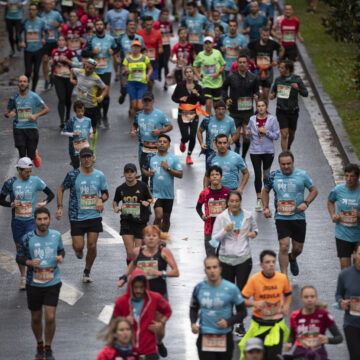Subscribe to our newsletter to find out about all the news and promotions, and automatically receive a welcome discount coupon in your email.
post -> Fartlek, training to gain resistance
Fartlek It is one of the terms that is part of the universal language of running. Fartlek is a swedish word which means “speed game” and give name to resistance training method developed by Swedish coaches Gösse Holmer and Gösta Olander in the 30s
Almost one hundred years after its implementation, this training method continues to be widely used in athletics and also in sports. running popular.
In this article we are going to analyze the benefits of fartlek, how to do it and what it is for.
Fartlek or variable continuous training
Resistance training methods can be grouped into two types: constant continuous training y variable continuous training (fartlek). Continuous training is characterized by no recovery breaks.
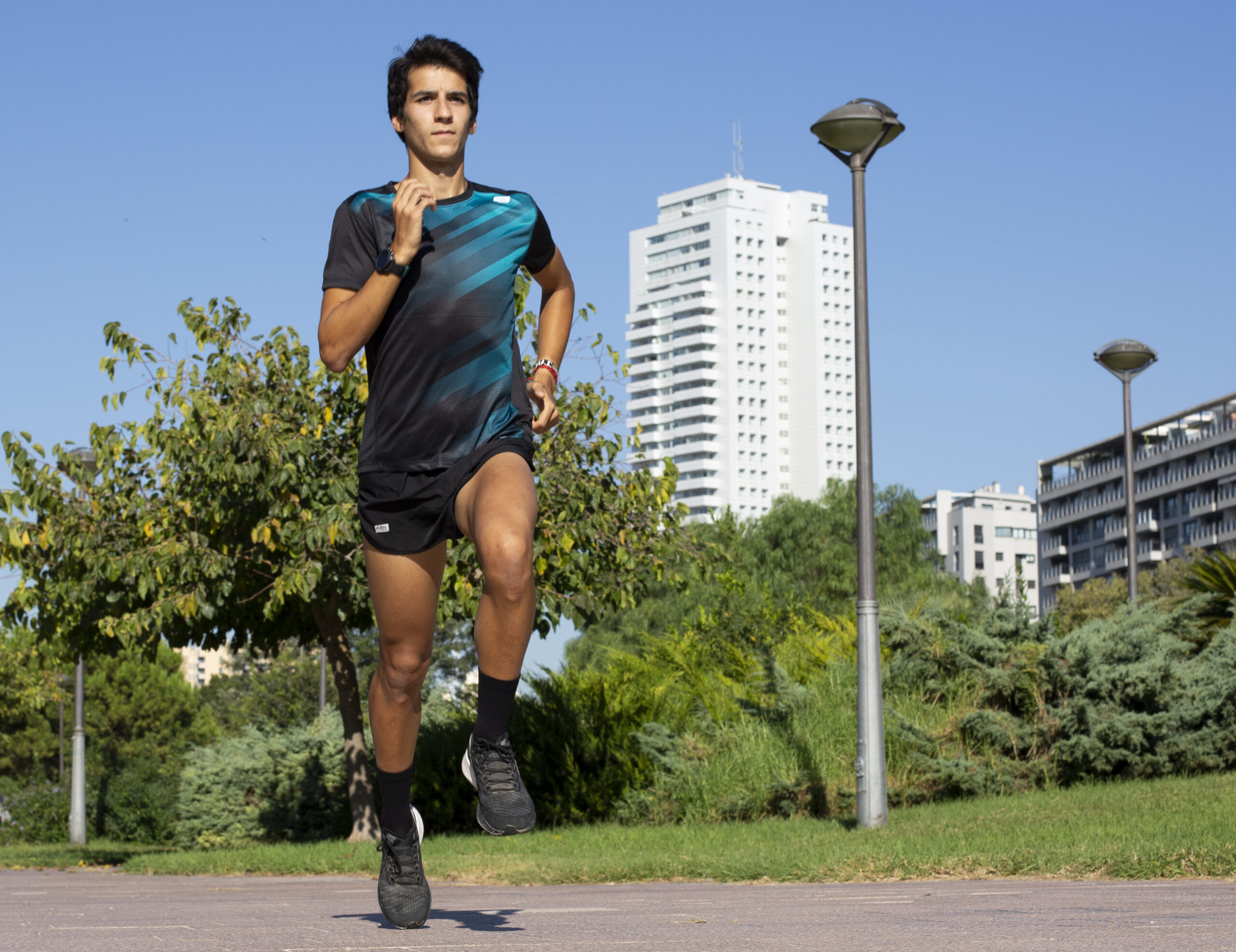
The training continuous constant serves to improve the aerobic resistance and, in summary, it consists of traveling a long distance (more than 30 minutes of continuous running) at constant intensity, no change of pace and without taking recovery breaks.
The training continuous variable or fartlek, instead, introduce changes of rhythm which can be forced by the terrain or the speed of the runner. That 'adaptability' to changes of pace is why its creators baptized it as a “speed game” (fartlek).
Fartlek is a highly effective and versatile training method, used in the running to improve la resistance, speed and aerobic capacity.
This type of training combines intensity intervals with lower intensity recovery periods; Depending on the level of the runner, recovery can be done by running or walking.
It is a training in which there are no breaks for recovery; You do not stop running and alternate changes of pace (it can also be done using ''CA-CO'', which is WALKING and RUN; this option is the most recommended for beginner runners or for runners who are returning after a long time break due to injury, illness...), it can also be done on varied terrain, which makes it a powerful tool for runners of all levels.
Benefits of fartlek training
Let's see below the benefits that the variable continuous training method or fartlek can bring.
- Improvement of aerobic and anaerobic capacity. Fartlek involves alternating intense rhythms (depending on our goal, more or less intensity) and softer rhythms. This It helps improve the aerobic capacity, which is the body's ability to use oxygen during prolonged exercise, such as anaerobic capacity, which refers to the ability to perform intense efforts for a short period without depending as much on oxygen.
- Increased resistance. The variability of rhythms in the fartlek simulates the variation in intensity that can occur with changes in pace in the race. This improves mental and physical resistance, preparing runners to cope with different conditions during a competition. In the winter season, some athletes who prepare cross (a long-distance athletic modality that takes place partially or totally in cross country) they usually use the fartlek in their training. Cross country is a modality that is run on a circuit and in which a constant pace is not maintained; 4-5 laps are usually completed (depending on the competition) on a circuit of about 2 kilometers in which there are many turns, ups and downs, irregular surfaces... The fartlek can simulate what happens in a cross-country race.
- Burning calories. Of interest, high-intensity intervals in fartlek increase calorie burning during training. This can be beneficial for weight loss or maintaining a healthy weight.
- Specific training for races. The fartlek can be adapted to simulate the conditions of a specific race (such as a 5K, a 10K, or even a half marathon), greatly helping runners adapt to the paces and challenges they will encounter in real competition.
Without going much deeper into other more specific benefits for elite athletes, as a summary we could indicate that fartlek promotes improvement of rhythm and speed, allows you to obtain a diversity in training, helps improve the mental preparation and adaptation to diverse terrain facing the competition.
Alternating between faster and slower paces helps runners develop a better sense of rhythm and speed. Fartlek allows you to vary training and avoid monotony, something that can be especially useful for maintaining motivation and avoiding stagnation in performance.

It is also notable that high intensity intervals in fartlek they challenge the mental resistance of runners, helping them overcome fatigue and improve their ability to manage discomfort during races; and if the intensity of the intervals varies depending on the type of terrain (uphills, downhills, uneven surfaces) it can also be of great help as preparation and adaptation to the different race conditions that the athlete will encounter.
How to do fartlek training
We have already seen the benefits of fartlek, so now it is time to explain how to perform fartlek training:
Heating. We will start with a proper warm up to prepare the body for effort. Initially we will do joint mobility exercises and then we will start running 10'-15' depending on our level and at the end we will do a little running technique.
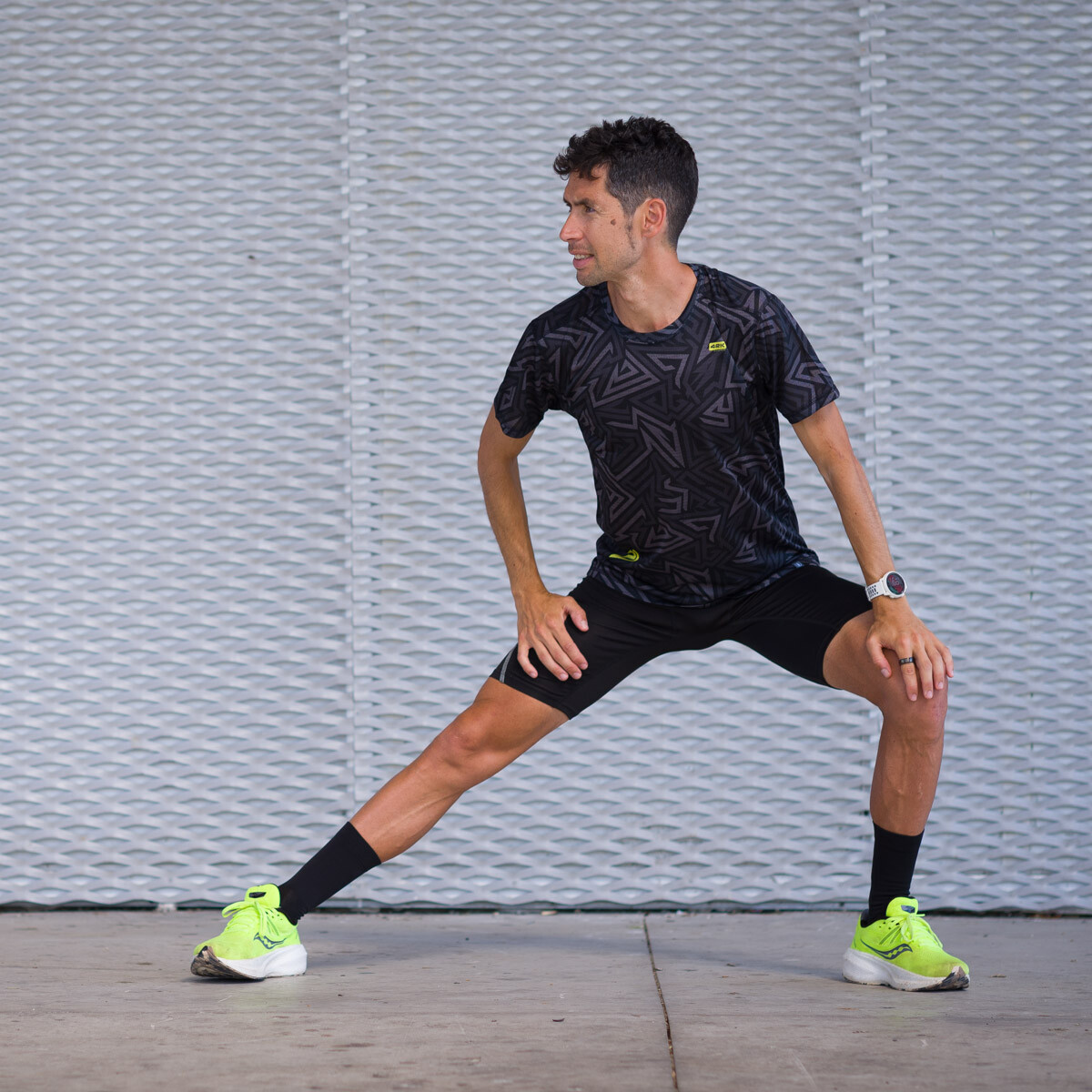
Interval Run. Depending on our objectives we will do a number of repetitions or others during the race, alternating between high intensity intervals and lighter recovery. For example, a runner with a 10K goal might start with a 6 x (2′ + 1′) fartleck doing the 2′ a little faster than the first threshold and easy recovery minute. Instead of going at a rhythm you can also do it by pulse. The ratio of time between intervals and recovery can vary depending on your goals and fitness level.
Variety of rhythms. It can be played with different rhythms and interval durations. You can run short, fast intervals, or longer, moderate intervals.
Varied terrain. If you are an athlete who prepares cross-country, choosing varied terrain (dirt terrain with moderate ups and downs, with curves...) will be very interesting and positive to achieve a good preparation for this modality.
Back to the calm. We will have to finish the session with a phase of lowering heart rate by doing a very light jog of 3'-5'.
Variability. Alternating between fartlek sessions and other types of training, long runs and recovery days is very convenient to maintain a balance in the training program.
Application of fartlek training by levels
Beginners. Beginner runners can start with shorter intervals and longer recovery. This allows you to gradually adapt to the intensity and build a solid base.
Intermediates. Intermediate runners can experiment with different work-to-recovery ratios, progressing to longer, more challenging intervals.
Advanced. Advanced runners can implement the fartlek as part of their weekly training plan. They can incorporate race-specific intervals and simulate competition conditions.
In summary, fartlek training in the running provides wide range of benefitsat improve endurance and speed until developing the mental resistance and the adaptability to different race conditions. Its flexibility and versatility make it an essential tool for runners looking to improve their performance and enjoy variety in their training.
One of the questions that friends who run have asked me many times is what eat before a race. In this article I am going to indicate a series of nutritional recommendations before facing a competition running.
What to drink and eat before a race?
It is very important to ingest alimesuitable nts in the hours before a competition to obtain a optimal sports performance y avoid possible discomfort that prevent you from competing at the best level during the race.
It is necessary to emphasize that the sports season has several phases (rest, preparation, competition and post-competition) and therefore thelimentation will not be the same at different times of the season.
It is also important when talking about what to eat before a race to differentiate between the needs of highly trained people (regular or elite athletes) and people who run for fun or leisure (popular runners and runners), since the energy pathways used during physical activity will not be the same. Obviously, any elite athlete knows what to eat before a race, but among popular runners it is common to find great ignorance.
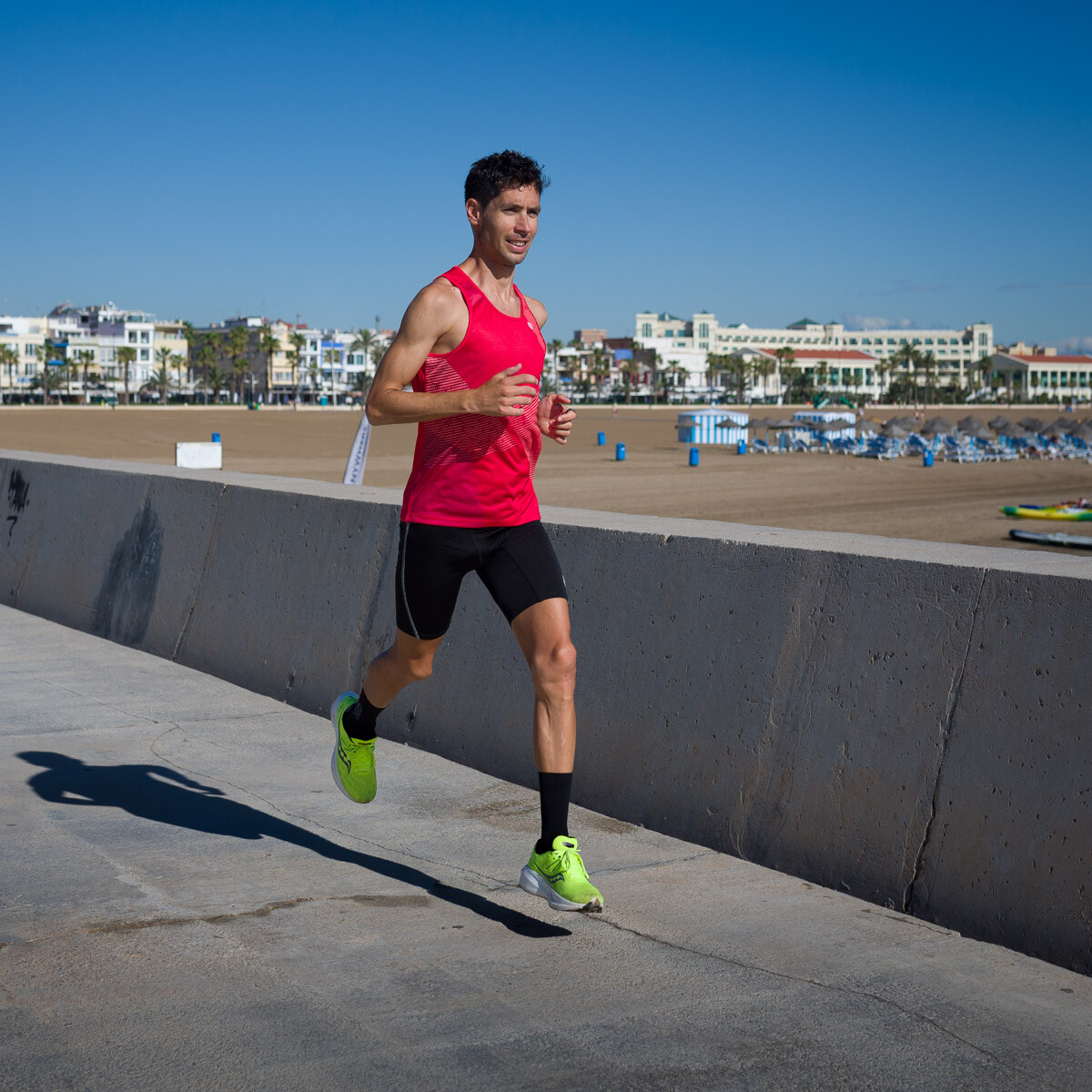
While the highly trained runner uses intramuscular fatty acid oxidation and is much less dependent on muscle glycogen (glucose store), the less trained athlete consumes a greater amount of carbohydrates (glucose) and a lower proportion of fatty acids. This supposes a lower sports performance in the case of the less trained athlete, because glycogen is very limited, while fatty acids can be used for a longer time.
Nutritional recommendations to face a competition
But what, when and how should we eat before a race? We are going to see the what, when and how of what to eat and drink before facing a demanding physical activity.
– About 3 hours before physical activity
3 hours before facing the test, a intake rich in alimefoods rich in carbohydrates (since glucose shortage is directly related to fatigue and decreased sports performance) and to a lesser extentlimented with protein, fiber and fat.
If we have the competition in the morning, my breakfast proposals would be the following:
- Milk or vegetable drink with cereals.
- Milk or vegetable drink with toast with honey.
- Milk or vegetable drink with oats.
If we have the competition in the afternoon, my lunch/meal proposal would be the following:
- pasta or rice (always white) with a small amount of vegetables and a little bit of tuna.

Why pasta or white rice? Well, because its digestion is much faster and therefore the assimilation of its nutrients is also much faster. Furthermore, to ensure correct and rapid assimilation, both pasta and rice must be well cooked and not "al dente" because it will be much more difficult to digest.
– Between 30 and 60 minutes before physical activity
The protocol at this time will start with 2-3 glasses of water about 15-20 minutes before making this intake to avoid slowing down digestion.
between the tolimeIn the absence of approximately 1 hour before the start of the test, it is necessary to include aliments of easy digestion as bread with honey, quince or jam; Skimmed yoghurts, non-whole grain cereals, low-fat biscuits, non-whole muesli, fruit or dried fruit.
All of this can be replaced by a few 300-500ml of isotonic drink rehydration sugar.
– Between 5 and 10 minutes before the start of the test
Ingest isotonic drink sugary orlimeFoods in small quantities that are very easy to digest, such as dried fruits. In case you do not consume isotonic drinks at the moment, take 2-3 glasses of water.
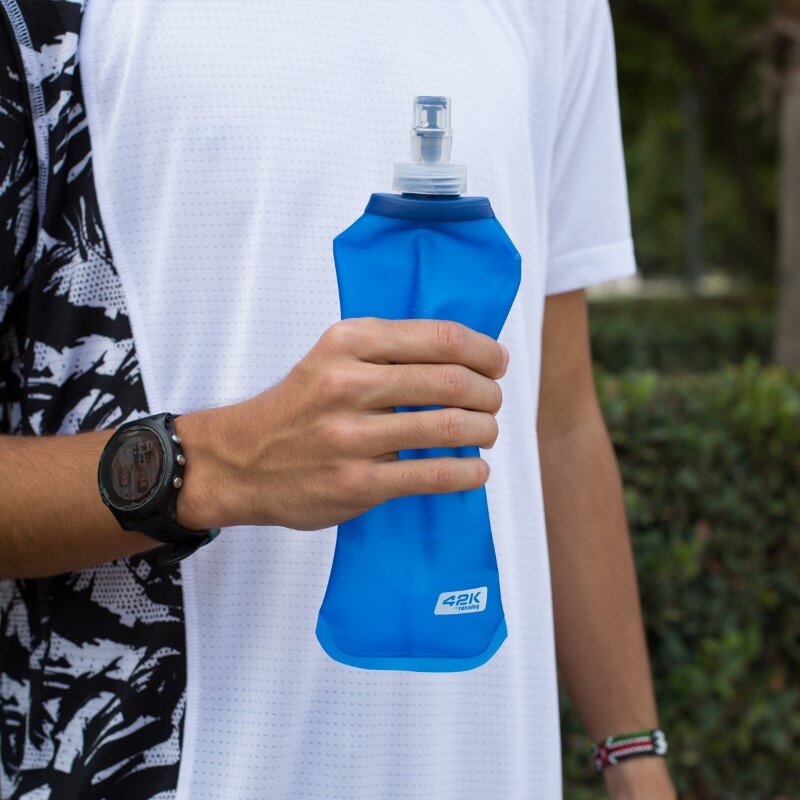
Everything must be trained before the race: also food and drink
A very important warning is that everything you eat or drink before the race must have been tried several times previously on training days. On the day of the competition you do not have to do experiments: no need to trylimeFoods or drinks that we have not tried before and we are sure that they feel good to us.
It is recommended try everything in training first and adapt these guidelines to our protocol. I give an example: the isotonic drink 5 minutes before the start may not feel good, but a handful of raisins and dried apricots do; Or that an hour before you don't feel like a jam sandwich but you do feel like some non-integral cookies. It is very important that each athlete knows himself as well as possible and knows with certainty what tolimeFood and drinks work for you and feel good.
None of the advice or recommendations on what to eat before a race that appear in this article (or in that of any other nutrition specialist) should be put into practice on the day of the race as it is possible for discomfort, allergies, intolerances, hypoglycemia...
I insist again that it is vitally important do not introduce changes or do tests on our a guidelineslimentation the day of competition because we can ruin the preparation of many months for a foolish thing. Not only do you have to train resistance, strength or elasticity, but also you have to train thelimentation and hydration, especially when we face tests that will require a prolonged and constant effort of more than 60 or 90 minutes.
Of course, you don't have to worry as much about what to eat before a 5K race as what to eat before a half marathon or a marathon. My advice to those runners who intend to prepare for a competition such as the half marathon or the marathon is to see a sports nutritionist for advice and guidance on the correctlimentation that they must incorporate into their planning for the sporting objective.
Most athletes who regularly practice running and regularly participate in different popular tests have a special fixation for the collecting technical competition shirts.
For many they represent a legacy with which to review their sports career and remember tests, moments, challenges overcome, etc.
Therefore, taking care of them properly, keeping them with care and respecting them as if they were a precious trophy is a very common attitude among them. What runner does not keep the shirt with which he began to train and take his first steps in the world of racing? running?
Probably, it is the best test to remember the effort expended and, in this way, not to lose heart and continue overcoming obstacles, improving performance.
There are those who keep a collection of 300, 400 or even more. The shirt of the first popular test in which he participated, the first in which he was able to get on the podium, that solidarity test in which he took part, or the one that, due to its demanding and toughness, he feels proud to have completed. A T-shirt can become like a notch on a revolver, a totem that brings luck and protects from misfortune, a balm against decay, or a challenge worth fighting for.
The perfect medium to launch a message
The technical competition shirts They not only provide comfort to the runner. In addition to their specific characteristics, by which the runner feels protected against the fatal effect of the fabric rubbing against sweaty skin or inclement weather, these garments can become the ideal medium to launch a certain message.

Solidarity and sport go hand in hand on many occasions, and popular athletics is very given to turning to certain social causes. There are races that seek to raise funds to help Alzheimer's patients or send food to countries in conflict situations. Some even get to monopolize the attention of the media.
And that is why they become an unbeatable showcase to launch a message or claim. Today they are made technical competition shirts that can be customized. From congratulating a relative's birthday to sending a message of support to a friend or colleague who is going through a delicate situation.
The runner worth his salt will also never throw a shirt in the trash. If it is kept in good condition, he will keep it even if it no longer serves him, as a trophy or as a souvenir. Or, you will choose to donate it to associations that collect clothes for people in need.
It's a good idea to save technical competition shirts of different sizes, since over time it is more than likely that the athlete will lose and gain weight at different stages. That the figure is outlined when it is at a high peak in terms of fitness and that some fat is recovered in times of break, either due to injuries or different personal reasons.
For whatever reason, conserve, pamper and respect the technical competition shirts It is a habit that more and more athletes acquire.
Una marathon carries behind months of preparation, but not only in what to workouts or physical exercise it means. The eatingIf possible, it is even more important than the daily routine itself. Here are five basic tips for runner that you have to take into account:
- First of all, you must consume a big number of carbohydrates to recover as soon as possible the muscle glycogen, the raw material of the broker. Therefore, in particular, both just before and after the trainingYou can have anything from bread or pasta to rice or potatoes. Fruits, legumes or juices are also rich in carbohydrates.
- To give you an idea, if you weigh 75 kilograms, 450 to 600 grams of carbohydrates per day are recommended. In the days of running intense, you should increase the intake by 150 grams. For women weighing around 50 kilograms, between 300 and 400 grams are recommended.
- The proteins are other keys to the sports nutritiona. In addition, these must come from 100% organic products, such as meat, fish, dairy or eggs. They are recommended, in particular, to avoid muscle damage, combat oxidative stress and balance energies.
- Also, to combat the usual iron deposit drops, 15 milligrams per day are necessary. This mineral is found in abundancelimentos, such as cheese, seafood, beef and pork, or green leafy vegetables. We talked about this topic in another post. «Iron in the diet of runners»
- Good hydration plays a fundamental role in days of intense physical exercise. Therefore, it is important to drink immediately before starting the race (two to three glasses of water) and during its course. A jerrycan on the waist or a backpack camelbacks are great ideas for hauling water.

By following these five basic tips, you will gain health and avoid more serious problems.
If you have been interested in this post, consult our Sports Nutrition section from this link
Featured Image Source post
Today we want to tell you about the runnerexia, a "runner's disease" of which the journalist alex heras, he spoke on his website Valencia runner.
Alex, explained in a funny way this disease that affects many popular runners and cited some of its symptoms:
You notice that your numerical ability. You know exactly how to project the time in which you would finish any race knowing the rhythm and vice versa.
Suddenly, you think all proud that all your friends run, but you do not realize that the friends you had They haven't run in a year that you haven't called them. Social impact. That there is life beyond running and yes there are people "very very strange that it is not running yet and that it is interesting, even if you don't believe it ”.
The typical Friends who come to dinner a Saturday to your house and with whom you have always been very comfortable, at twelve they begin to bother. The reason: you want to get enough rest for Sunday to be up to the job you have in group. That is if there is no race on Sunday. Because if you compete, there is no worth dinner or friends at home.
They propose you a plan and the first thing that pops into your head is the calendar racing without caring if it's the wedding of your best friend. Or your brother. You do not care.
Do you remember from the memory the carreers three months from now. And the brands you did on those tests two years ago. But you forget the of your parents and children ... and the anniversary wedding, of course.
Running without GPS it's like not having run. What is not registered does not exist. And if you display it on top of it, it is as if you had done it double. Your arm hurts from extending it so far to show your watch in public.
You don't realize that magazines about running they always tell the same thing and that the subject is not so bad. You go a little brutalizing cultural level.
La hyponchondria of the corridor. Always observing and continually checking the pains. Fear pathological to fall sick just before the big dates. The expression more neurotic for the runnerexia.
And if already a Saturday awarded by the night you are able to go to bed before your partner because you train on Sunday and when he / she comes to your bed you are already asleep… male, stop running. Sex.
Tu closet it's scary. Do you have the Diogenes runner syndrome. You accumulate T-shirts, runner bags, clothes and pairs of sneakers. Some you hide in the storage room for fear of bringing another one home.
Your wall in Facebook and time line of Twitter has more maps, coordinates and tracks than the cartographic section for the CIA. Everyone uploads, shares and comments on their workouts.
Do you remember that a year ago, you commented that you "liked" a photo of some kids dressed up in Carnival. Yes, they are your children.
If you want to read the full article you can do it in this link
I will always remember the first day I put on my shoes and went for a run a year and a half ago. When I got home they laughed at me, but you haven't done a kilometer! Those words are burned to me and today I realize that you can run anywhere, you just need your will and shoes.
Fleeing from stress, and in search of those endorphins of happiness, of which I heard so much talk, I overcame my fears and little by little the km were more. that I completed. x
It was true, I was comfortable striding through the Alboraya orchard or the beaches of Alicante, You can run anywhere, you just need your will and your shoes. Wherever you are, each path gives you something, the smell of the fields, the sound of the waves, the familiar faces of regular runners who greet you and give you encouragement with the “come on, you have it.” Gaze. I think that now I am more receptive to all those little details, the endorphin load is so necessary ...
Little by little I got hooked on running to the popular races, and I started with 5km, 7km and my great challenge, the first 10 k and in my town, Alborada contra el Cáncer, in 2013.
Luckily, I have the friendship of a great runner, Luis Felix, who encouraged me, like his sister, to continue running. I have gained a lot, thanks to running, I found myself sharing my hobby with friends I hadn't seen in more than 20 years. It is a joy to meet all the runners, whether elite or not, and experience the great atmosphere of the races, the moments before, during and reaching the finish line.
Today there are already a few of 15km and I find myself wanting to continue, it is true that this running hooks.
The best, that people trust me and encourage me to Half marathon, so there I am, already registered. See you in October and I hope not to disappoint all those who support me, which are many. I see you at the finish line.
A hug to all!!!!!
Marga Marti
 THE “PRO” THAT DOES NOT IMPROVE
THE “PRO” THAT DOES NOT IMPROVE
You have been running for more than 10 years, at first you improved very quickly, the times in 10 km were coming out, the half marathon no longer have secrets for you ... but you hit the "wall" in the marathon. Here are four points to avoid if you want to enjoy even the last 195 meters of the marathon.
1 Sessions of more than 15 km in the last two weeks
You need at least 15 days to recover from the marathon preparatory training and thus be able to face it with rested and fit legs. Do not do sessions of more than 15 km at marathon pace in the previous two weeks or you will compete fatigued. And please, let's forget once and for all about running more than two hours in a row in a workout. The error comes from someone finding out that Chema Martínez or another professional is filming 35 km long and trying to do the same. The difference is that Chema finishes it without problems in less than two hours and a popular one does not lower than three with what he runs the marathon before doing the marathon. A beating that only leads to disaster.
Do this:
The previous months you need a very long shoot every 2 or 3 weeks, starting at an hour and a half and going up to two hours. Of this time you do a third very slow, a third at your marathon pace and the other third 10 ”faster than your marathon pace.
2.Only one weekly workout faster than your expected marathon pace.
Improvements in speed translate into improvements in endurance, but it's hard to improve speed if you only do one fast session per week.
Do this:
From 2 to 3 fast starts per week, with series at your best competition pace of 3.000, 5 km and 10 km, in distances between 800 (at a 3 km pace), 1.500 (at a 5 km pace) and 2.500-3.000 meters (at 10 km pace).
3rd do VO2 max work
Working your maximum oxygen consumption will raise your anaerobic threshold and improve running economy.
Do this:
Fast series of 400 and 800 meters, at strong rhythms (your maximum speed in 3 km) and very strong (your maximum speed in 1500 meters). They work intramuscular and intermuscular coordination and should be done in the first phases of marathon training, every 10 to 15 days and once a week in the last eight weeks before the marathon.
4.Too much non-specific strength training.
Your visits to the gym focus on the weight room, with very general upper body and lower body toning workouts - the same plan as everyone else.
Do this:
Start your preparation with six weeks of full-body strength work, especially global exercises, then move on to hill training and exercises that simulate key aspects of running, such as single leg lunges, bench climbs, small jumps to one leg in place and squats. Emphasize exercises with weight, which require coordination and in which there are phases of movement with one leg, to simulate running. It ends with eight weeks of explosive and plyometric work, multi-jumps, sprint snatches, jumps from a bench to the ground with a bounce on landing, side jumps, etc.
TRICK
A common mistake of the "pro runner" is that he gets so hooked that he ends up competing every Sunday. It is clear that the competition hooks but you still have to control the popular competitions to which you sign up. You should not do more than two marathons a year (separated by at least four months), more than 6 half marathons (never more than one a month) and 10-12 10 km races (avoiding never competing two weeks in a row at full throttle)
Source: SportLife
Phew! Everything has already happened and we are alive. Dust, but alive. Some miracle, but alive. Many of us have recently run the marathon. Some were already veterans, but for others it was the first (and cruel and addictive) experience.
Neither one of us has been out of it. Those who least have some discomfort, stiffness, tired legs. The worst unemployed? Well, you know, those who could not cross the finish line or, what is worse, who ended up in one of the health posts.
What worries everyone the most in the weeks leading up to the race (and now) was not whether he would complete practice or whether he would be able to finish his particular challenge. What really took them away (and takes away) their sleep is what they are going to do now, that the race has already passed. This is not a strange feeling in the world of athletes. They strive to meet a goal, the test comes, they do it and they are left empty. Although it is easy to get out of this mental quagmire. With the training we have done, our physique is more prepared than ever, while our mind has been relieved of the heavy burden of meeting the challenge in mind. That is, we are free and we have plenty of powers. You just have to channel them into other goals.
Take another race, for example. We are in the middle of the popular tests season. More than 5.000 of these events are held in Spain and most do not exceed 15 kilometres.
 Well, now a few tips that you ran for on Sunday. They are very simple and can help you, who may be walking down the stairs on your back from what your quadriceps hurt. Your bodies it will take between two weeks and a month to recover, depending on your nature and the degree of training carried out. That is if you are not injured, which then will be longer.
Well, now a few tips that you ran for on Sunday. They are very simple and can help you, who may be walking down the stairs on your back from what your quadriceps hurt. Your bodies it will take between two weeks and a month to recover, depending on your nature and the degree of training carried out. That is if you are not injured, which then will be longer.
Speed up the recovery of muscles and joints by moving a little these days. It has to be done. Okay, if you're 'very sick' don't do it, but the right thing to do is jog (very lightly, much slower than running) for a little while (no more than 20 minutes), then undergo a thorough leg and back stretching session . Those who do not run, must stretch. The food these days post-marathon is just as important. We must emphasize carbohydrates, which must be ingested in greater proportion than proteins and lipids. Drinking plenty of water helps cell regeneration. An adequate quantity is three liters per day; the best place to drink it, the office.
No medicines, although a somewhat higher contribution of vitamin C does not hurt. Echinacea (herb with restorative virtues that is available in herbalists) works miracles. Although sometimes taking an aspirin with breakfast for the first few days is 'holy hand'.
Another thing for addicts. Although there are machacas that have run up to 56 marathons in a row, one per week, it is not recommended to run more than 2 or, at most, 3 a year. So, you already know if you have been hooked: think of the autumn ones, like New York, for example. While, to be limited to races of up to half a marathon. Or, much better, think of another sport.
Courage and think about the next one!
 We share with you some very practical advice from our vitonica colleagues for all those who want to start running. Running is one of the most complete activities at a sporting level, and that is why it is one of the most popular when it comes to aerobic exercise. The race is practiced by many people and every day we see more in our streets running. People of all ages and genders, and more and more are signing up for its practice. Therefore we want to give some tips for beginners, so that a bad practice generates an injury or vices that end up taking a toll on us.
We share with you some very practical advice from our vitonica colleagues for all those who want to start running. Running is one of the most complete activities at a sporting level, and that is why it is one of the most popular when it comes to aerobic exercise. The race is practiced by many people and every day we see more in our streets running. People of all ages and genders, and more and more are signing up for its practice. Therefore we want to give some tips for beginners, so that a bad practice generates an injury or vices that end up taking a toll on us.
Normally when a person starts from scratch without any advice or knowledge to practice running, they run the risk of being injured very easily. For this reason it is very important that we take into account some points when starting, it is necessary that we set some calendars and times when launching into the practice of the race.
How to start
First of all, it is necessary that we keep in mind the lack of habit that our body has when going out for a run. It is necessary that if we are not used to this activity we carry out some acclimatization sessions. We should never start running without more, without having prepared our body before. It must be taken into account that when running our body puts many muscles to work that must be in perfect condition at all times.
The preparation is adequate, and for this It is not recommended that at first we go out for a run every day. At first, what we are going to recommend are two days to practice this activity. This will help us acclimatize to its realization. In addition, the days should not be consecutive in any case, since it is important that the muscles recover after a training session.
The same that we should not use every day to run, neither do the sessions need to be very intense Until we have a base It is good that at the beginning we do light races in which we can combine periods of jogging with others of light walking, since the essential thing is to acclimatize and also accustom our muscles to the activity that little by little will become a constant in our life.
It is necessary that at the beginning let's not put marks and we know how to listen to our body and know at what moment it is so that little by little we can increase both the training sessions and the time and intensity of the same. The only thing that precipitation and haste will bring us will be dire consequences for our health, delaying the proper development much more.
Risks to avoid
Not respecting the times and rushing when practicing this activity can only have a series of serious consequences. First of all we must bear in mind that without a correct acclimatization and development We will not achieve the results we are looking for, and for this reason it is essential that we do not set time, because each person needs their moment and know when they are ready to go up in the development of the activity.
To this we must add the state of the muscles and tendons, because not being used to sports activity we will run more risk of fatigue if we train for long periods of time and do not allocate time to acclimatization. This overtraining will lead to excess tension in the muscles that will end in an injury that will keep us standing. That is why it is necessary to rest especially at the beginning, as well as to go little by little at all times and not want to make the best times as soon as you start.
I warn you that once you try it, there will be no going back! Good luck…
42K · All rights reserved



